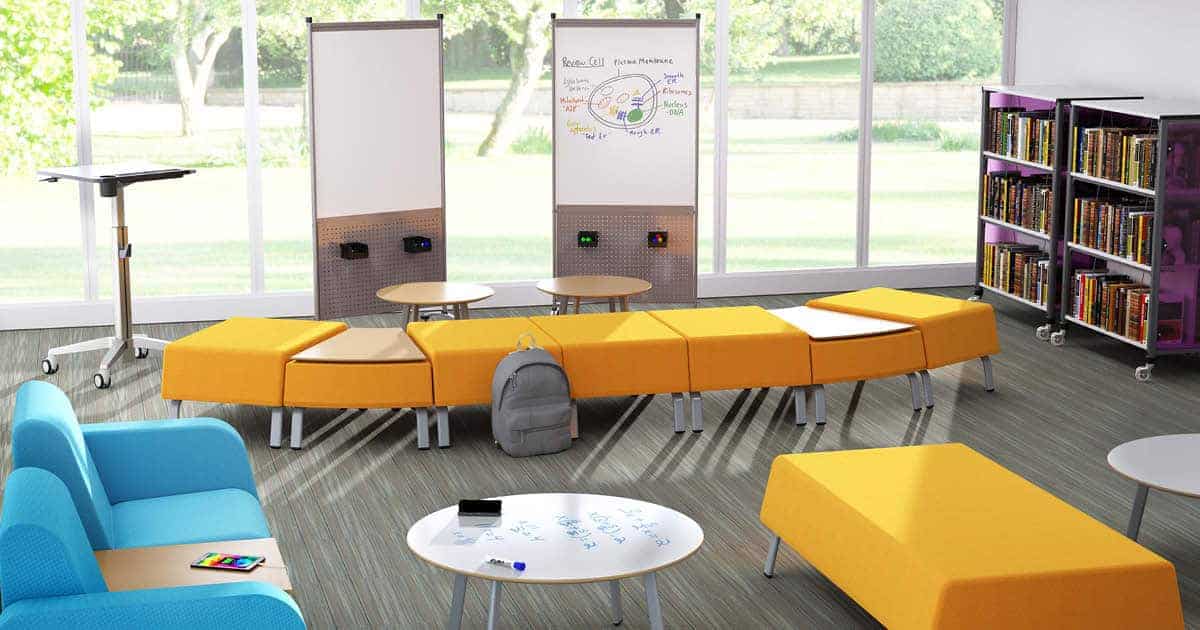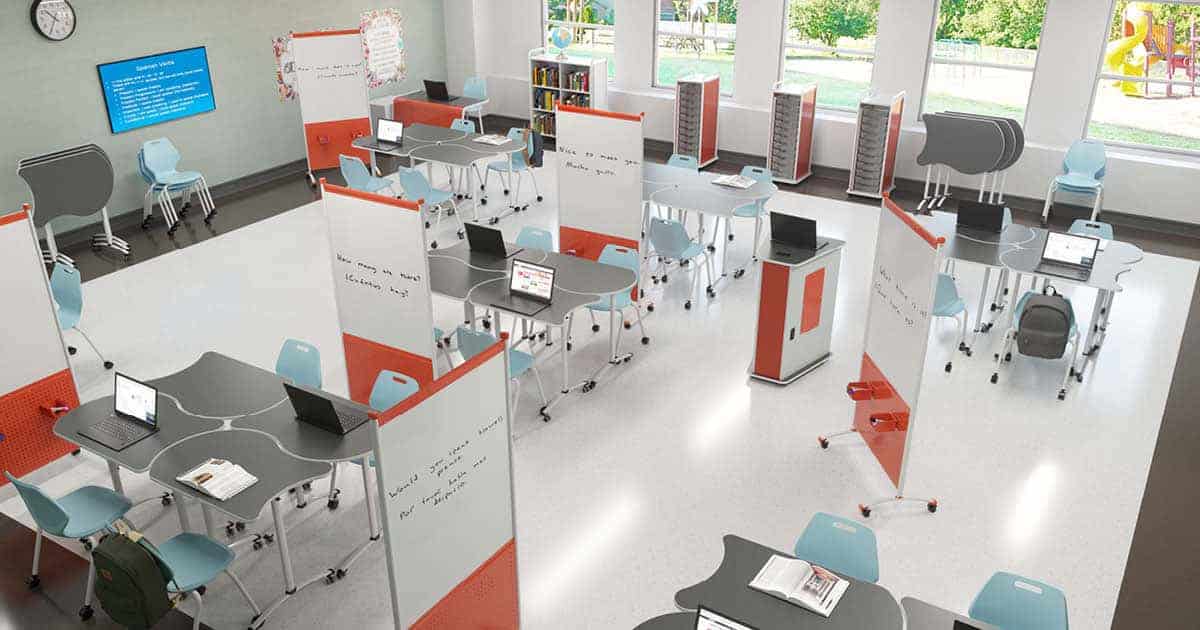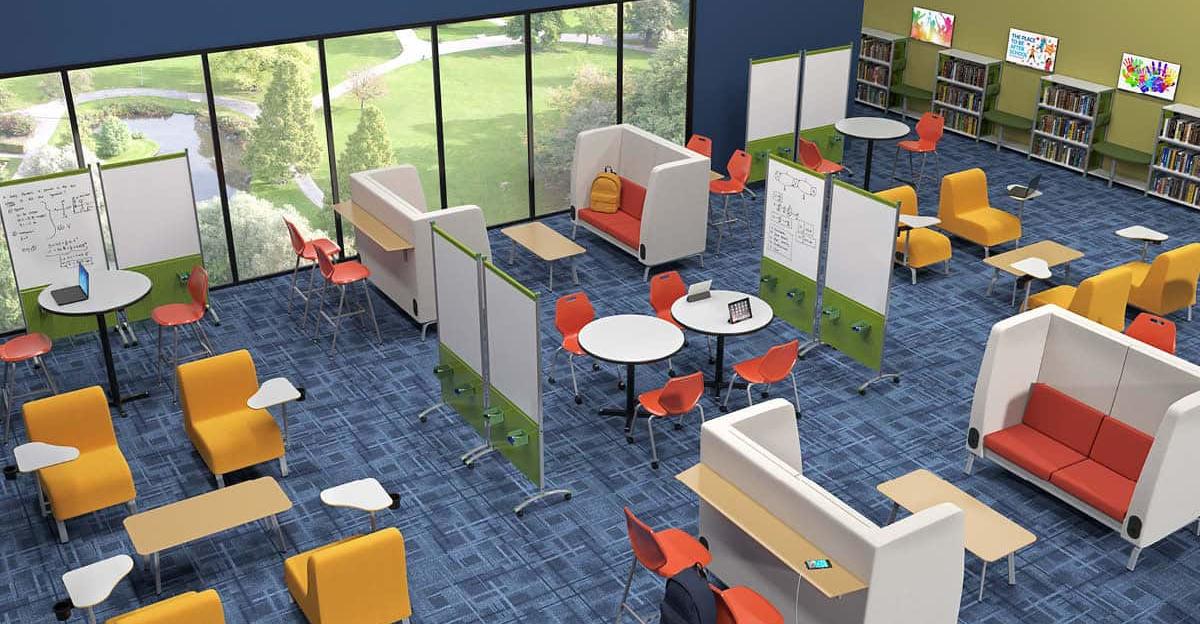How can K-12 educators and administrators transform their learning environments into places where students don’t want to leave when the bell rings—and where deeper learning happens?
While the quality and type of instruction that students receive is a critical factor, how the space is designed also matters. In fact, a review of the research on learning space design suggests that it can have a significant effect on how well students learn.
In one of the largest studies on the topic, British researchers from the University of Salford studied 153 classrooms in 27 primary schools over the course of two research phases to identify the impact of the physical classroom features on the academic progress of the 3,766 students in those spaces. They found that classroom design was responsible for 16 percent of the students’ learning rates.
7 Environmental Factors that Impact Student Learning
The researchers examined 15 design factors in particular and discovered that seven of these had an effect on students’ learning: light, temperature, air quality, ownership, flexibility, complexity, and color.
The first three factors relate to the naturalness of the environment and students’ comfort in that environment: Is there enough natural lighting? Is the room neither too hot nor too cold? Are students getting enough fresh air through a proper ventilation system?
The last two factors, complexity and color, refer to how much stimulation the room provides. Is there an appropriate level of stimulation in the space, without being overwhelming for students? Is the “color mood” suitable for the activities taking place there? Are walls painted a light color, with bright highlights or a feature wall? Are the other features in the room (such as furnishings) visually interesting?

Ownership is a measure of how identifiable and personalized the room is. Do the distinct characteristics of the classroom allow a sense of ownership among students? Are there creative design features that make the room original? Is students’ work displayed on the walls? When students feel ownership of the learning space, they are more likely to take responsibility for their learning.
Ownership also refers to the degree to which the furniture in the room is comfortable, ergonomically sound, and gives students a variety of choices in where to work—such as soft seating options, traditional desks or tables, and/or standing desks. Students can focus better and be more productive when they are comfortable and can choose where they want to work.
Flexibility refers to whether the design of the space can support various learning methods, activities, and student needs. For example, soft, comfortable seating for individual students might be perfect for independent reading, while small tables or groups of three to five desks arranged together are ideal for small group collaboration.

To support different kinds of activities, classrooms should include “learning zones” that are set up in different ways, or they should be equipped with moveable furniture so that the teacher (and/or students) can easily change the configuration of the room to fit the task at hand.






Since you are now part of School Specialty, I am wondering if the above items are on contract?